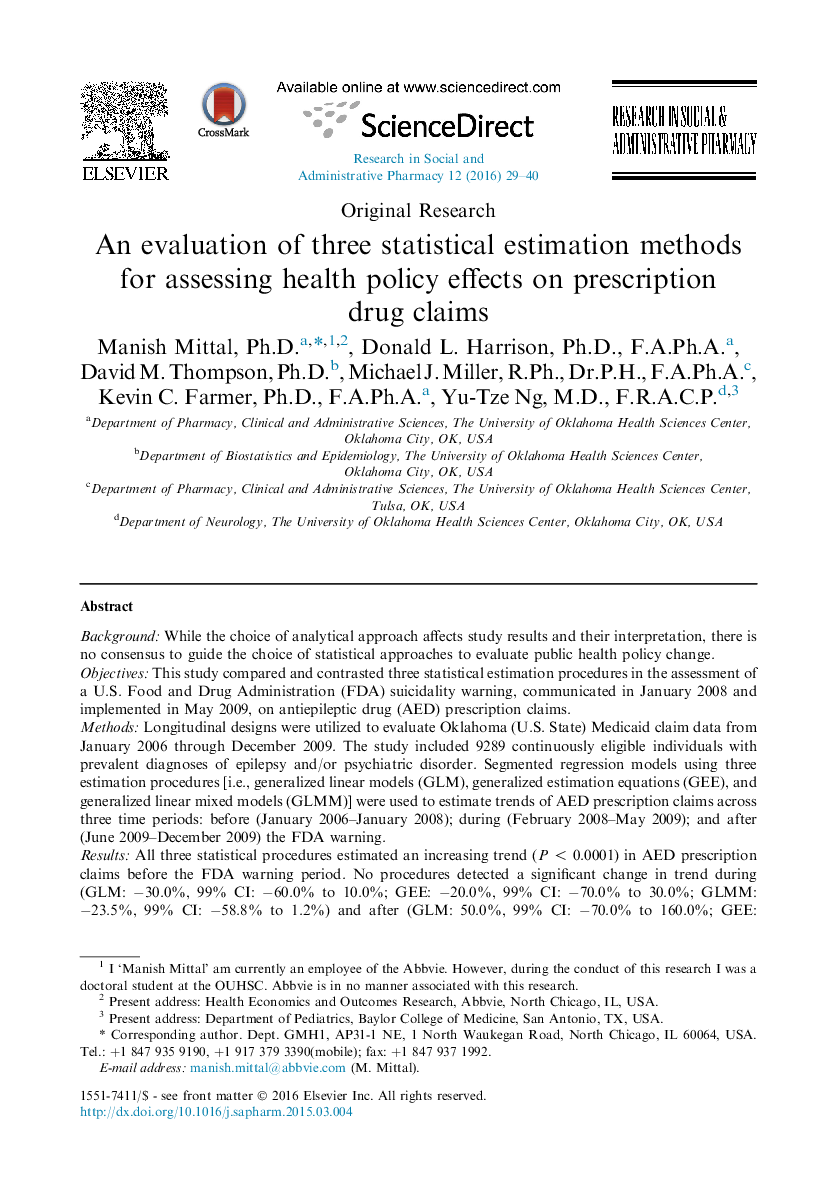| کد مقاله | کد نشریه | سال انتشار | مقاله انگلیسی | نسخه تمام متن |
|---|---|---|---|---|
| 2508261 | 1117600 | 2016 | 12 صفحه PDF | دانلود رایگان |
BackgroundWhile the choice of analytical approach affects study results and their interpretation, there is no consensus to guide the choice of statistical approaches to evaluate public health policy change.ObjectivesThis study compared and contrasted three statistical estimation procedures in the assessment of a U.S. Food and Drug Administration (FDA) suicidality warning, communicated in January 2008 and implemented in May 2009, on antiepileptic drug (AED) prescription claims.MethodsLongitudinal designs were utilized to evaluate Oklahoma (U.S. State) Medicaid claim data from January 2006 through December 2009. The study included 9289 continuously eligible individuals with prevalent diagnoses of epilepsy and/or psychiatric disorder. Segmented regression models using three estimation procedures [i.e., generalized linear models (GLM), generalized estimation equations (GEE), and generalized linear mixed models (GLMM)] were used to estimate trends of AED prescription claims across three time periods: before (January 2006–January 2008); during (February 2008–May 2009); and after (June 2009–December 2009) the FDA warning.ResultsAll three statistical procedures estimated an increasing trend (P < 0.0001) in AED prescription claims before the FDA warning period. No procedures detected a significant change in trend during (GLM: −30.0%, 99% CI: −60.0% to 10.0%; GEE: −20.0%, 99% CI: −70.0% to 30.0%; GLMM: −23.5%, 99% CI: −58.8% to 1.2%) and after (GLM: 50.0%, 99% CI: −70.0% to 160.0%; GEE: 80.0%, 99% CI: −20.0% to 200.0%; GLMM: 47.1%, 99% CI: −41.2% to 135.3%) the FDA warning when compared to pre-warning period.ConclusionsAlthough the three procedures provided consistent inferences, the GEE and GLMM approaches accounted appropriately for correlation. Further, marginal models estimated using GEE produced more robust and valid population-level estimations.
Journal: Research in Social and Administrative Pharmacy - Volume 12, Issue 1, January–February 2016, Pages 29–40
